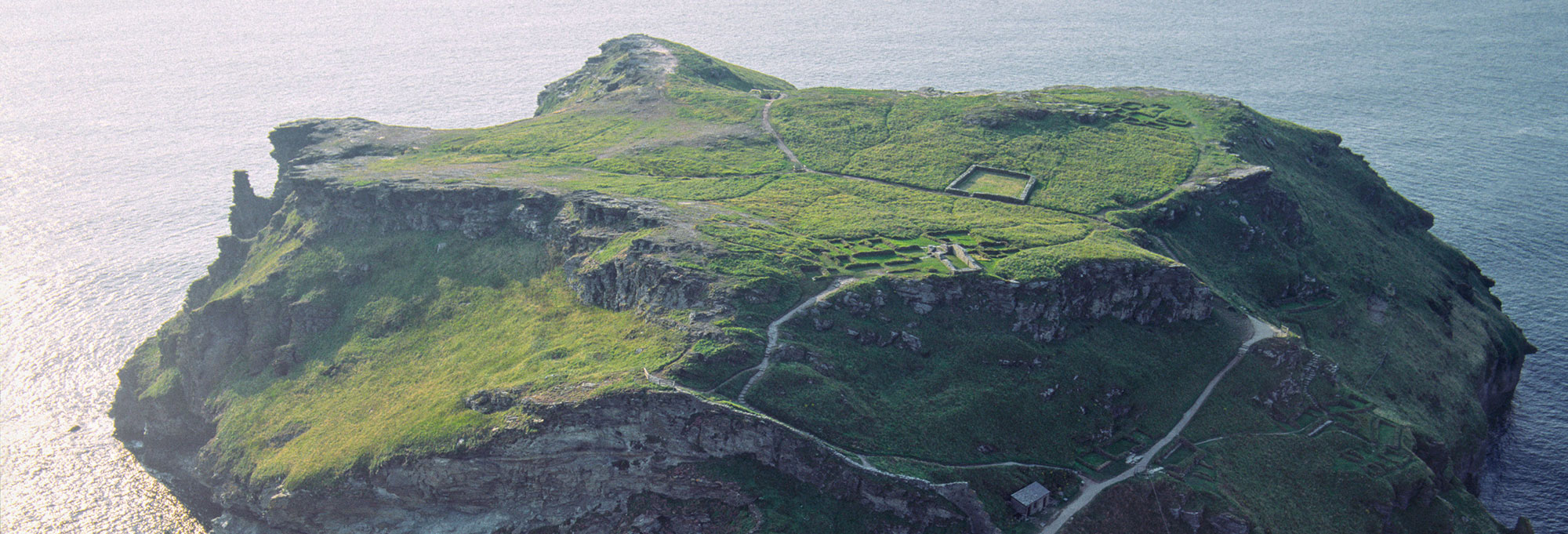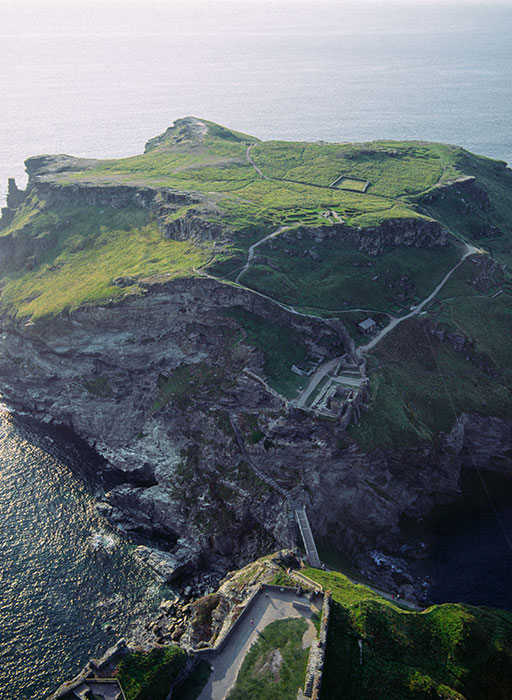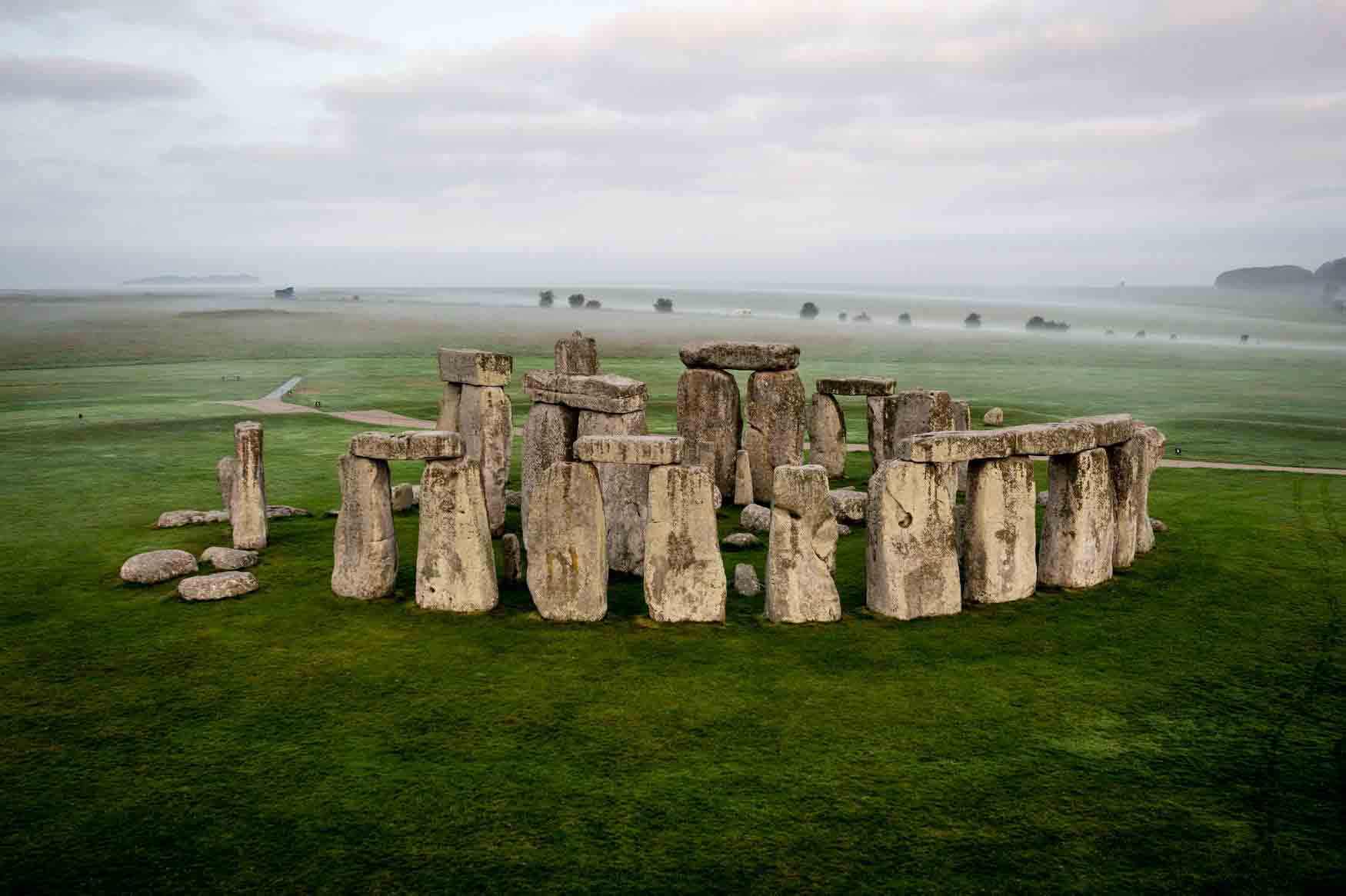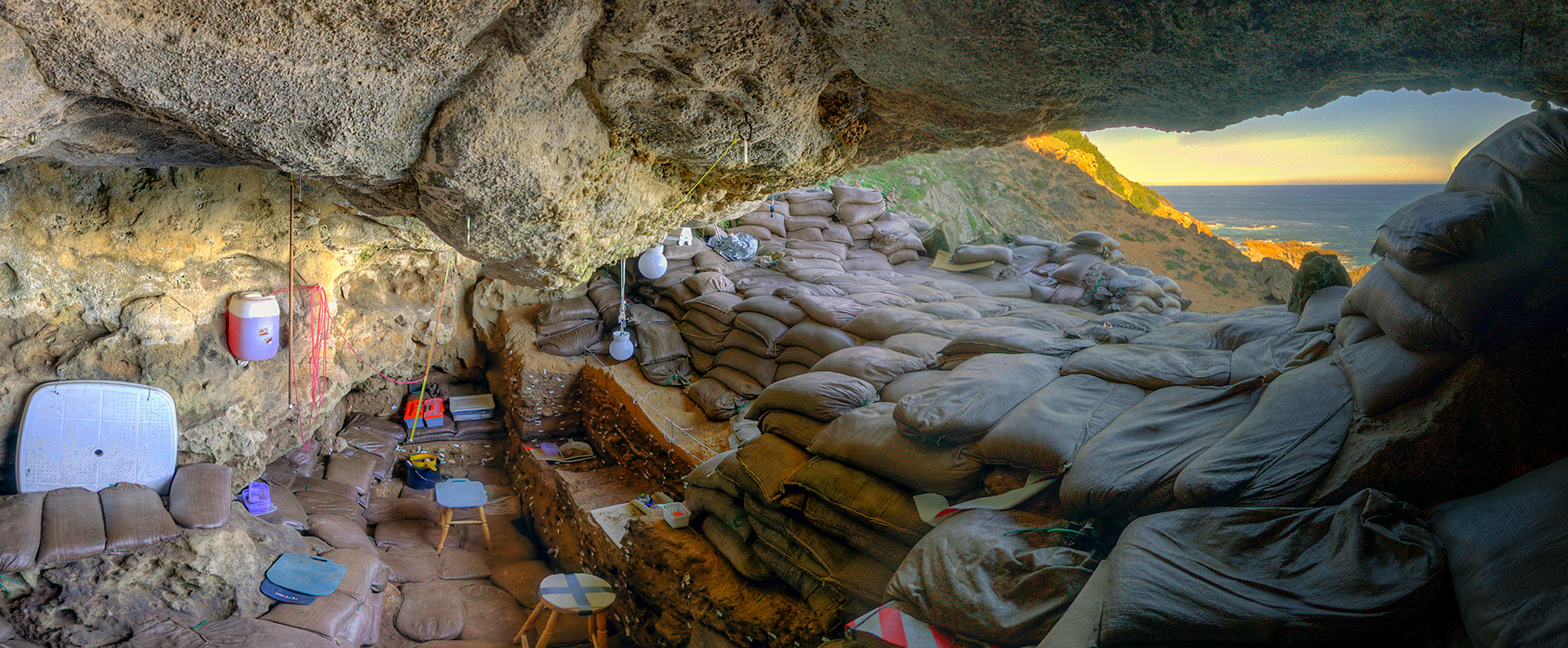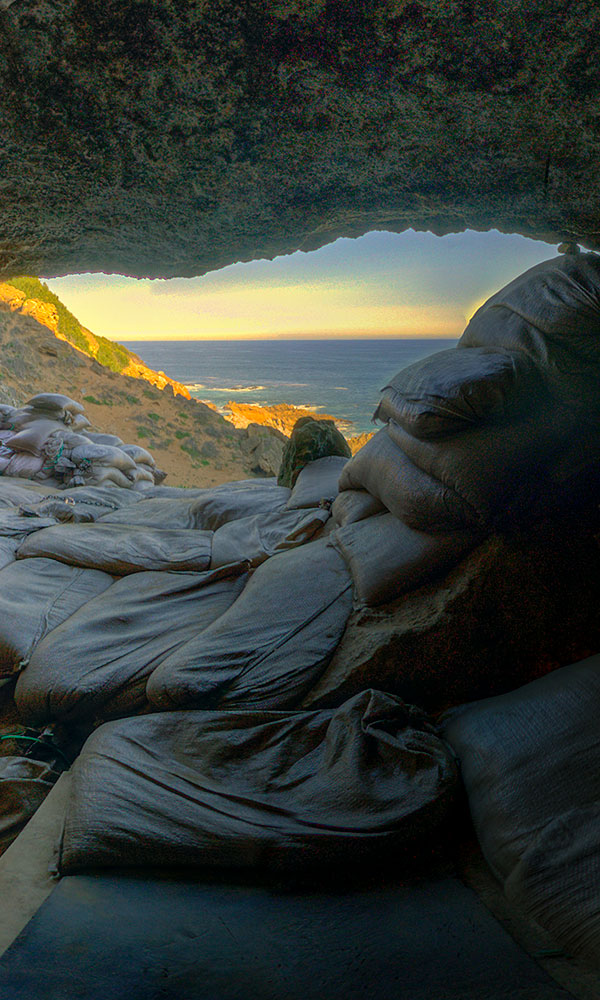
At the beginning of the fifth century A.D., the people of the province of Britannia found themselves living outside the borders of the Roman Empire for the first time in more than 350 years. The previous centuries had been prosperous ones for the citizens of Rome’s most northwesterly territory, but their circumstances would soon change radically. The diverse population, made up of native Celtic Britons, the offspring of Roman soldiers, and immigrants from elsewhere in the empire, faced an uncertain future. The collapse of Roman Britain ushered in a period known in the popular imagination as the Dark Ages. It’s an era commonly thought to have been characterized by economic breakdown, cultural deterioration, and mass invasion by pagan Germanic peoples such as the Angles, Saxons, and Jutes. After the dissolution of a central Roman ruling body, Britain began to fracture politically into several small kingdoms. Few written sources date to the time, making it one of the least documented and least understood periods in British history.
Hundreds of years later, medieval writers who chronicled early British history portrayed post-Roman Britain as a mystical time of warlords and epic battles, of monsters, dragons, and wizards. It was also the age of King Arthur, Britain’s greatest legendary hero, who was said to have led the Britons to victory against the Germanic invaders. It is difficult for scholars to disentangle the reality of life in the early Dark Ages from the many myths associated with it, as there are few established facts upon which archaeologists and historians can rely. But recent excavations on the shores of Cornwall at Tintagel Castle, a place inextricably intertwined with Arthurian legend, have revealed new evidence about life in post-Roman Britain that seems to contradict the traditional Dark Age narrative. Archaeologists now believe that here, in one of the most remote places in England, a settlement unlike any other thrived from the fifth through eighth centuries. As the new story of Tintagel shows, this era in Britain’s history was anything but dark.
Today, the approach to Tintagel resembles something out of a fantasy movie. A sharp descent from a nearby village winds through a deep, narrow ravine before eventually leading to a small hidden cove. From there, the ruins of a castle suddenly rise up out of the Celtic Sea, seemingly out of nowhere. While Tintagel is known as an island, it is actually a craggy headland jutting out into the water, tethered to the coast by a thin, rocky spit of land. It is currently accessible only by ascending a steep, and, at times, daunting staircase. As dramatic a setting as it is, hundreds of thousands of visitors make the pilgrimage here each year for another reason—to follow in King Arthur’s footsteps. Arthur’s association with Tintagel Castle dates back nearly a thousand years. The British cleric Geoffrey of Monmouth’s widely read twelfth-century History of the Kings of Britain records that Arthur was conceived at Tintagel Castle, the product of a duplicitous union between Uther Pendragon, King of Britain, and Ygerna, Duchess of Cornwall (see “Was There a Real King Arthur?”). Although little is known about Monmouth himself, his epic book propelled him into the role of de facto national historian of England. His Arthurian tales were particularly popular with the literate upper classes. In fact, most of the standing remains visible at Tintagel belong to a thirteenth-century medieval castle that was directly inspired by the legend. One of Europe’s wealthiest men, Richard, Earl of Cornwall and brother of King Henry III, reportedly read Monmouth’s account and was moved to build a romanticized fantasy castle on the supposed spot of King Arthur’s conception.
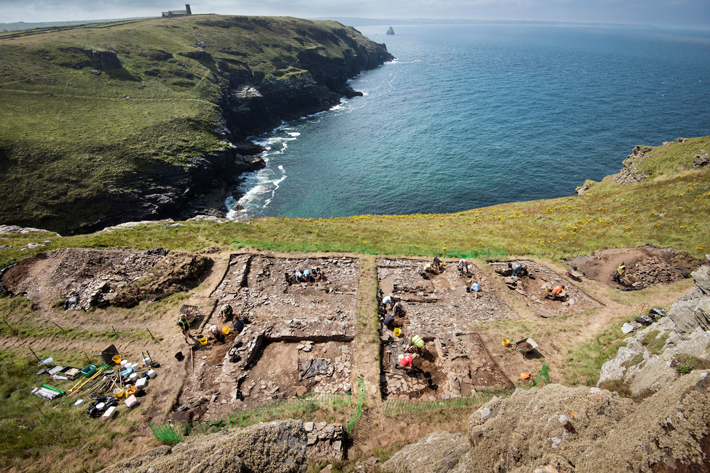
Scattered around the ruins of this medieval castle are the footprints of much older, smaller rectangular buildings. These are the remains of post-Roman Tintagel. English Heritage, the organization that manages the site, recently commissioned a five-year project to better understand this settlement. “The impetus of this project is to interpret Tintagel’s earlier history, which, for me, is more important than the later castle,” says Win Scutt, English Heritage properties curator.
Jacky Nowakowski, principal archaeologist at the Cornwall Archaeological Unit, leads the excavations. She is quick to note that her team is not digging to unearth evidence of the real King Arthur, but instead to examine what Dark Age life was really like at Tintagel, and why the site’s legendary connections endured. “What we’re attempting to do is to try to work out what underlies all those myths and legends that are attached to Tintagel,” she says. “Because it’s quite clear that this was an important place.”
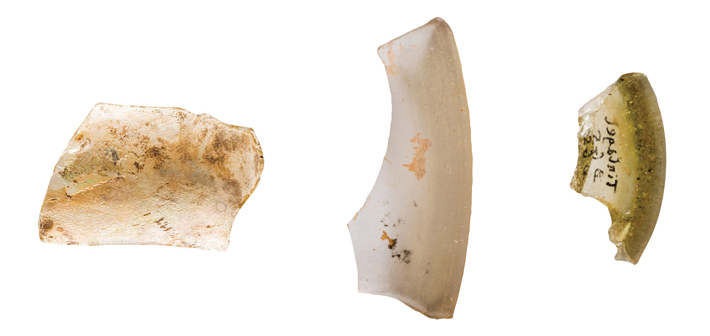
The first excavations at Tintagel began in the 1930s, and researchers returned throughout the twentieth century. Given the small, cell-like appearance of some of the buildings, archaeologists once believed that Tintagel was the site of a secluded monastery, an interpretation researchers now question.
Nowakowski and her team are focusing on a previously unexcavated terrace clinging to the headland’s southern slope. They have found a complex of three well-preserved early buildings, the largest of which is an impressive 50 feet long with three-foot-thick walls. Tintagel’s inhabitants not only built heavily on the relatively flat central plateau of the site, but they constructed terraces along the steep hillsides in order to create more habitable land—no easy task, but one that must have been necessary. “Why would you build in such precarious positions if the whole island is not densely populated?” asks Scutt. “The civil engineering that went on at this site is phenomenal.”
EXPAND
Was There A Real King Arthur?
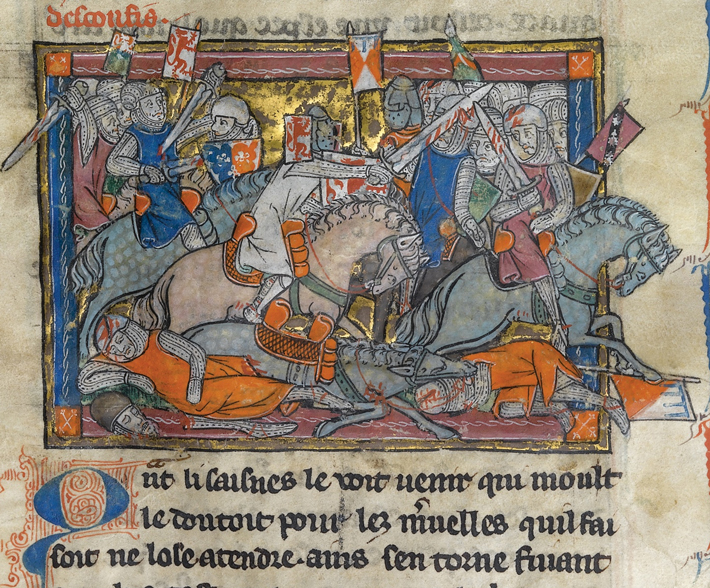
King Arthur has captured the popular imagination in a way that very few legendary characters ever have. The extensive list of books, television shows, movies, and video games that are based on Arthurian lore demonstrates just how ingrained he has become in world culture. But one contentious question has divided both scholars and enthusiasts for centuries: Was there an actual King Arthur who ruled Britain during the Dark Ages?
The main source for the Arthurian legend is Geoffrey of Monmouth’s twelfth-century book The History of the Kings of Britain, which chronicles the lives of the earliest British rulers. Although there are a few sparse references to an “Arthur” figure in documents from the ninth and tenth centuries, Geoffrey gives the first extensive account of King Arthur’s life and exploits. The story begins when Arthur is conceived at Tintagel Castle, where the wizard Merlin transforms King Uther Pendragon into the likeness of Gorlois, the Duke of Cornwall, so that Uther can spend the evening with Gorlois’ wife Ygerna. Arthur later inherits the British throne at the age of 15 and leads the Britons in several epic battles against the invading Saxons, eventually defeating them. He goes on to extend his empire to Ireland, Iceland, Norway, and Gaul, before being betrayed by his nephew Mordred and killed in battle.
While many familiar aspects of King Arthur’s story are included in Monmouth’s version, he does not mention Camelot, Lancelot, the Holy Grail, the sword in the stone, or the chivalric Knights of the Round Table. According to Bournemouth University archaeologist Miles Russell, many details were added to the stories centuries later to make Arthur a more appealing figure. “Truth be told, the Arthur of Geoffrey of Monmouth is a deeply unlikable sociopath, a violent, quick-to-anger, murderous thug,” says Russell. “He is someone who very much fits the Dark Age idea of a successful king, but not a hero for the Middle Ages.”
Monmouth’s account of Arthur is frequently derided by today’s historians, as it was even by his own peers. At best, he is chastised for getting his facts wrong; at worst, he is accused of inventing the entire tale. Monmouth himself claimed to have simply translated a very ancient book into Latin, but that source material has never been identified. Furthermore, no proof of Arthur’s existence has been uncovered, even at Tintagel. “There is no evidence that anyone called Arthur lived there,” says Russell. “Nor is there any archaeological evidence to support the existence of Arthur as a real person.”
Russell believes that Monmouth cobbled together various different ancient tales, characters, and episodes to create his now-beloved Arthur figure. It is not an entirely original story, as it borrows heavily from the exploits of other well-known legendary rulers, especially Ambrosius Aurelianus, another British warlord who won a decisive battle against the invading Anglo-Saxons. “It’s clear that rather than inventing everything, Geoffrey used a variety of sources, including folklore, chronicles, king lists, dynastic tables, oral tales, and bardic praise poems, in order to create a patriotic British narrative,” he says. “Arthur is an amalgam of at least five characters. He is, in effect, a composite Celtic superhero—the ultimate warrior for the Britons.”
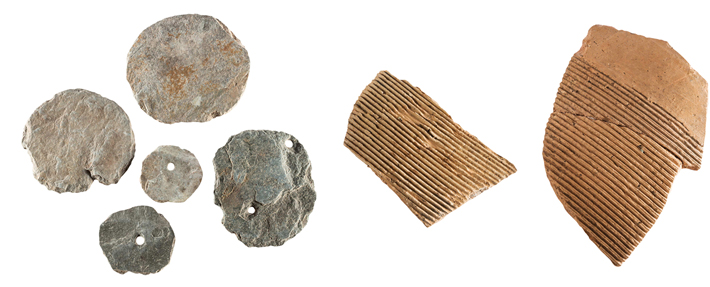
Although only around a tenth of the island has been excavated, research suggests that as many as 100 post-Roman buildings may be spread around the site. Scholars have long thought that large settlements simply didn’t exist in the post-Roman period. Sizable towns such as Londinium (London), Camulodunum (Colchester), and Verulamium (St. Albans) were the socioeconomic, political, and religious heart of Roman Britain. These urbanized centers became obsolete after the end of Roman rule and their populations dramatically declined as people dispersed into the countryside. If the team’s projections are correct, Tintagel might have been the most densely occupied site in all of Britain. “This is bigger than London,” says Scutt. “It’s the biggest in Britain. It’s quite phenomenal because we don’t have anything to compare it with.”
Nowakowski chose to focus her excavation on the terrace because it is less susceptible to the erosion that affects other parts of the site. It did not disappoint. “We have cultural material, five feet deep, that is producing a huge number of finds,” she says. The level of preservation of what they have discovered, from ceramics to animal bones to seeds, has allowed researchers to begin to understand the daily activities, lifestyle, and diet of Tintagel’s Dark Age inhabitants. And while there is a paucity of archaeological and cultural material found elsewhere in Britain dating to this period, Tintagel is an exception. More post-Roman pottery has been unearthed at Tintagel than from all other sites in Britain combined. Together, the finds are revealing that an unusually wealthy and high-status community lived there.
The source of Tintagel’s extraordinary size and wealth seems to have been its maritime links to continental Europe. “Rather than seeing it on the edge of the world, on the periphery of things, it’s actually well connected,” says Nowakowski. Cornwall is known for its abundant metal resources, most notably tin, but also silver and lead. Tintagel’s post-Roman inhabitants were likely capable of trading these commodities within a systematic exchange network that extended along the Atlantic and Mediterranean coasts. New finds show that they acquired luxury goods from places a thousand miles away in the eastern Mediterranean. Amphora sherds unearthed at the site indicate that olive oil and wine were being imported to Tintagel from Iberia, North Africa, and the coast of Turkey. Glass shards also suggest that Tintagel’s residents feasted using an array of delicate French and Spanish glass vessels, goblets, and bowls. “The glasses may be for drinking wine, but they are also very posh,” says Scutt. “You wouldn’t use them in an ordinary household. It’s an extravagant display of wealth.”
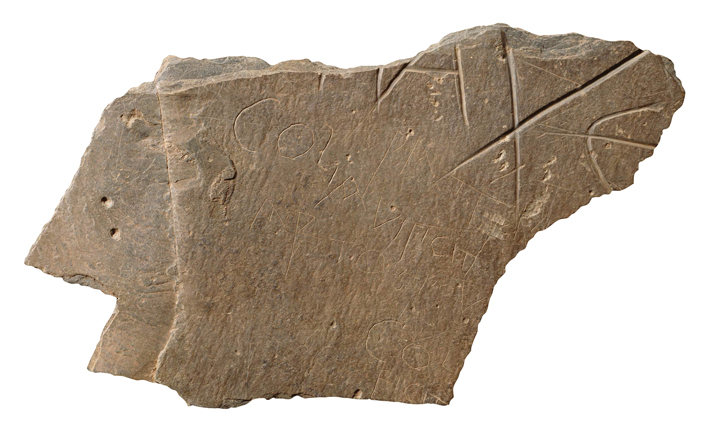
No piece of evidence better exemplifies the culture of post-Roman Tintagel than an inscribed piece of slate that was found embedded in a recently excavated building’s wall. Not only is it an exceptional example of post-Roman writing in Britain, but it also suggests the presence of a literate Christian population at Tintagel. While late Roman Britain was officially a Christian society, Christianity waned in the post-Roman period, thanks in large part to invasion by pagan Germanic peoples. However, the inscribed slate shows that Christian ideals and lifestyles were maintained at Tintagel throughout this period. Another example of writing from the site is the so-called Artognou stone, which was discovered in the late 1990s. This artifact caused a sensation, given the intriguing similarities between the inscribed name “Artognou” and “Arthur,” but experts have since dismissed any historical connection.
According to Michelle Brown, an expert in medieval manuscripts and professor emerita at University College London, the newly unearthed stone dates to the late seventh or early eighth century and its writing style, language, symbols, and phrases are central to understanding the people living at Tintagel. The engraving consists of seven lines, with only a few words or letters per line. Its overall meaning is difficult to decipher, but valuable information about the scribe who wrote it can be gleaned from studying its composition.

The inscription’s opening line contains the Latin name Tito (“for or by Titus”). It also contains two local Brittonic names, Budic, and Tud or Tuda. While the scribe displayed his knowledge of Latin with phrases such as viri duo (“two men”) and fili (“sons”), he must have also been at least somewhat familiar with Greek, given the inclusion of a delta, the Greek letter D. The ornate style of some of the letters suggests the scribe was also acquainted with Christian manuscripts of the time. Brown believes the inscribed stone was unlikely to have been a finished product intended for display, but was used as a kind of exercise piece on which the scribe may have been practicing his formal handwriting. Nevertheless, the stone speaks to the surprisingly cosmopolitan tenor of the period, and of Tintagel itself. Says Brown, “The presence of Latin, Celtic, and Greek elements in the inscription, and familiarity with the sorts of scripts carved on stone, scratched on wax tablets, and written with the pen in gospel books reveal a complex society which looks to its native and Roman past and to its continued international relationships.”
Who were the people capable of such sophisticated building techniques, long-distance trade, lavish displays of wealth, and religious learning? “It has to be something to do with the geopolitics that are taking place at this time,” says Nowakowski. After the collapse of Roman rule and the ensuing political fragmentation, local Brittonic chieftains were thrust into positions of power. They eventually formed the Kingdom of Dumnonia, which includes parts of today’s Devon and Cornwall. Nowakowski and others now believe it is likely that the kings of Dumnonia also founded Tintagel as a stronghold at a strategic location along the coast. But Scutt points out that Tintagel was a complex and diverse community that can’t be so simply defined. “The orthodoxy now is that it’s a royal site,” he says, “but, actually, we are coming to the conclusion that it was probably a mixture of things—of trading, of religious activity, of administration, as well as a center of prestige and power. Tintagel is one these little sort of sparks along the Atlantic coast that seem to preserve and keep the light of the Roman idea shining.”
Archaeologists still aren’t certain why Tintagel declined around the eighth or ninth century. By Geoffrey of Monmouth’s time, there was little left of the once-prosperous town. Perhaps the great Dark Age settlement survived in the collective memory of the local inhabitants, and that is why Geoffrey chose it as the starting point of his King Arthur saga. Whether or not the site’s connections to the ancient kings of Britain are real or imagined, those links have endured for almost two millennia. Tintagel Castle is currently owned by the Duke of Cornwall, better known as Charles, the Prince of Wales, heir to the British throne.


